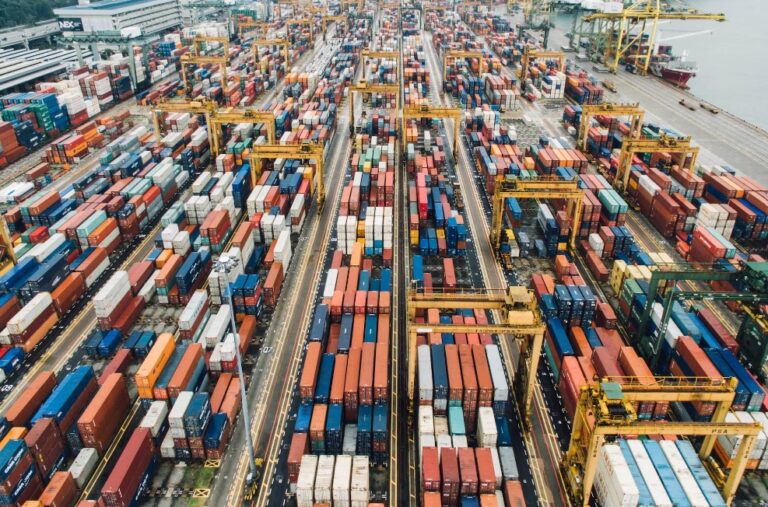Ten years after its launch, the dramatic consequences for many emerging countries of joining the Belt and Road Initiative (BRI), China’s maxi-infrastructure development project fueled with mountains of debt that those countries can no longer honor and that Beijing refuses to renegotiate on favorable terms, are becoming increasingly evident.
A recent article in the U.S. journal Foreign Affairs authored by noted U.S. Stanford University scholar Francis Fukuyama and his colleague Michael Bennon goes into the merits of what analysts call the “debt trap” those countries have gotten themselves into.
Table of Contents
One trillion dollars over ten years
This year, the authors begin, marks the 10th anniversary of the BRI, the largest and most ambitious infrastructure development project ever hatched in human history.
China has lent more than a trillion dollars to over a hundred countries. Thus overshadowing Western investment in the developing world and stoking fears about Beijing’s influence spreading on a global scale.
Over time, however, a conspicuous problem has emerged. Namely the inability of the recipient countries of those loans to repay their indebtedness to China.
The most discussed case is that of Sri Lanka. After it was no longer able to honor its debt related to the Hambantota port, Beijing was given control of the site for 99 years following a debt rescheduling agreement.
The trap
Sri Lanka is not the only case of a BRI-involved country that did not get significant returns from Chinese investments and found itself squeezed into a condition that Western analysts have called a “debt trap.” I.e., a situation of heavy indebtedness and inability to repay. The list includes Argentina, Kenya, Malaysia, Montenegro, Pakistan, Tanzania and many others.
Faced with this picture, the problem of the West is twofold. On the one hand, there is the fact that China finds itself the owner of ports and other strategic infrastructure in the developing world. On the other hand, there is the need for the IMF or other Western financial institutions to step in to help those countries repay debt and avoid default risk.
The result is that China is increasingly viewed as a rapacious actor and an inflexible creditor. Not much different from the way the West was looked at decades ago when it was saddled with billions and billions of bad debt.
And Chinese behavior risks exacerbating a debt crisis in emerging markets that could lead to a “lost decade” similar to that experienced by Latin America in the 1980s.
Read also: Will BRICS emerging countries wage (economic) war on the West?
Debt and development
In the 1970s it was the West that negotiated deals with developing countries to bring in capital and know-how with which to build roads, bridges, power plants and industrial plants that those countries desperately needed. Generally the lenders would wrest favorable terms for themselves, only to find themselves renegotiating those debts.
The pattern seems to be repeated now with the BRI although with Chinese characteristics. Many of the projects generously financed by Beijing have not generated returns or economic growth.
Moreover, these projects have been accompanied by controversies regarding land expropriations of indigenous communities, environmental damage, the less-than-excellent quality of Chinese construction, and Beijing’s preference for its own labor at the expense of indigenous labor.
But the biggest and most conspicuous problem remains debt. In countries such as Argentina, Ethiopia, Montenegro, Pakistan, Sri Lanka and Zambia, China’s very expensive projects have sent the debt-to-GDP ratio soaring. And, produced a balance of payments crisis.
In many cases the debt was renegotiated on drastic and mostly secret terms. Thus resulting in obscuring the true level of debt. Cases such as Montenegro, Sri Lanka, and Zambia, China then made deals with corrupt and authoritarian governments that simply deferred the debt to future generations.
IMF bailouts
Of course, this is not the first time that emerging countries have faced a debt crisis. However, there is one important new development. And that is that those countries are renegotiating debt bilaterally with an exorbitant government that is unwilling to compromise.
The result is now that those countries prefer to opt for a bailout from the IMF. Which has been forced to intervene repeatedly with figures ranging from Argentina’s 57 billion in 2018 (plus another 44 granted in 2022) to Suriname’s 688 million.
Despite the relief brought by the IMF, the situation of these countries remains critical, being forced to service a huge debt by diverting resources that could otherwise be allocated to growth, welfare or green transition.












